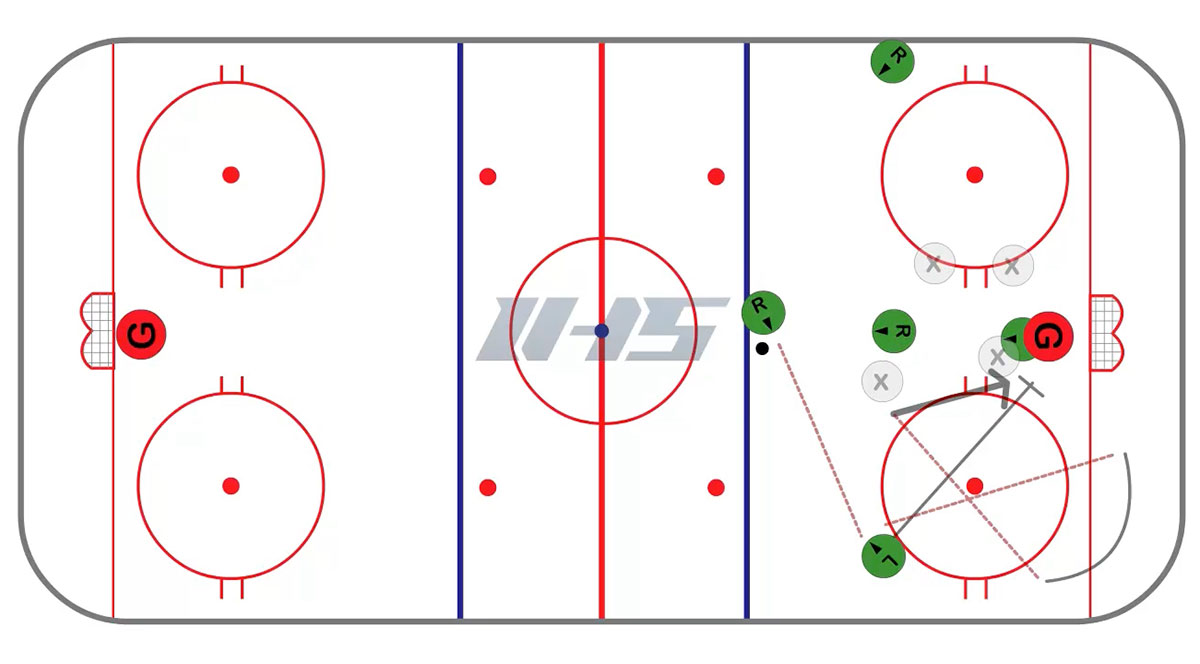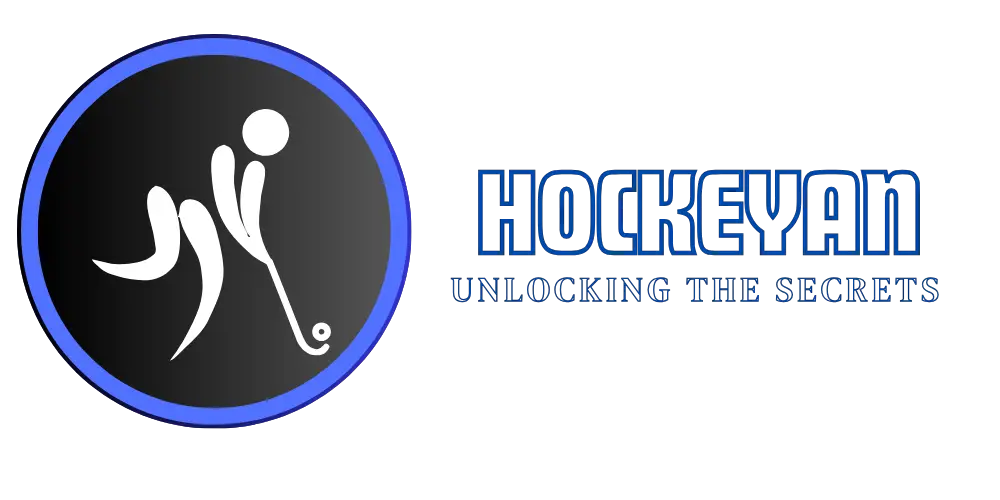A hockey power play occurs when one team has more players on the ice due to the opposing team’s penalty. This advantage can significantly impact the game, offering the team with more players a better chance to score.
Power plays are a crucial part of hockey strategy. They bring excitement and intensity, often changing the course of a match. During a power play, teams work hard to capitalize on their numerical advantage, while the penalized team strives to defend and kill off the penalty.
Understanding power plays helps fans appreciate the game’s strategic depth and the thrilling moments it creates. In this blog, we’ll delve into the mechanics of power plays, their importance, and how they influence hockey games. Let’s explore the world of hockey power plays together.
Introduction To Hockey Power Play
Hockey is an exciting and fast-paced sport. One key element that adds thrill to the game is the power play. Understanding the power play can enhance your appreciation of hockey. Whether you are new to the sport or a seasoned fan, this section will provide clear insights.
Importance In The Game
The power play is a crucial part of hockey. It can change the course of the game. Teams with a strong power play often have a better chance of winning. A power play occurs when the opposing team has a player in the penalty box. This gives the other team a numerical advantage.
During a power play, the team with more players has a higher chance to score. This is because they can create more opportunities. The team with fewer players must focus on defense. They must prevent the other team from scoring. A successful power play can boost a team’s momentum. It can also demoralize the opposing team.
Basic Concept
The basic concept of a power play is simple. One team has more players on the ice than the other. This situation happens when a player commits a penalty. The referee sends the player to the penalty box. The penalized team must play with fewer players for a set time.
During this time, the team with more players tries to score. They use strategic plays to create scoring chances. The team with fewer players focuses on killing the penalty. They aim to stop the other team from scoring until their teammate returns.
Power plays are exciting to watch. They showcase skill and strategy. They can lead to game-changing moments. Understanding the power play adds depth to your hockey experience.

Credit: www.icehockeysystems.com
Key Elements
Understanding the key elements of a hockey power play can give a team a significant advantage. A power play occurs when one team has more players on the ice due to an opponent’s penalty. This section covers the key elements that make a power play effective.
Players Involved
During a power play, the team with the advantage typically has five skaters and one goalie. The opposing team has four skaters and one goalie. The extra player gives the advantaged team more opportunities to score.
Formation And Positioning
Teams often use specific formations to maximize their power play. One common formation is the 1-3-1. It includes one player near the blue line, three players spread across the middle, and one player near the goal. Proper positioning helps to create scoring chances.
Players must move quickly and pass accurately. The team should control the puck and keep it away from the defenders. Quick passes and constant movement can break the defensive setup.
Strategies For Success
Hockey power play is a strategy where one team has more players on the ice due to penalties. This advantage helps the team to score goals more easily. Understanding and executing power plays can lead to success in games.
Playing a hockey power play can be a game-changer. Success requires a blend of sharp offensive tactics and solid defensive techniques. The right strategies can tilt the game in your favor. Let’s dive into how to make the most of every power play opportunity.Offensive Tactics
Effective offensive tactics are the backbone of a successful power play. Keeping the puck moving is crucial. Quick passes confuse the defenders and open up shooting lanes. Positioning is everything. Place one player in front of the net to screen the goalie. This creates chaos and increases the chances of the puck slipping through. Take advantage of the numbers. With one less defender, you can afford to send more players deep into the offensive zone. This aggressive approach can overwhelm the defense.Defensive Techniques
Defensive techniques are equally important during a power play. The best defense is to keep the puck in the offensive zone. This not only prevents the opponent from attacking but also keeps the pressure on their defense. Be aware of the potential for short-handed goals. Always have one player ready to fall back and defend against a breakaway. This minimizes the risk of conceding a goal while you are on the power play. Communication is key. Constantly talk to your teammates to ensure everyone knows their role and position. This coordination can prevent costly mistakes and keep the play structured. — Have you ever seen a game won by a single power play goal? How did the team execute their strategy? Share your thoughts in the comments!Role Of The Coach
Coaches play a crucial role in guiding teams during a hockey power play. They strategize player positions and movements to maximize scoring chances. Effective coaching can significantly influence the outcome of these critical game moments.
When it comes to the fast-paced and thrilling world of hockey, the role of the coach during a power play is crucial. The coach’s strategic planning and real-time adjustments can make the difference between scoring a goal or missing the opportunity. Let’s dive into how coaches prepare for and handle power plays. ###Planning Power Plays
Planning is the backbone of a successful power play. Coaches meticulously design power play strategies during practice sessions. They analyze the strengths and weaknesses of their own team and the opposing team. For instance, if your team has a strong shooter, the coach might set up plays that give this player the best chance to score. Coaches also consider various scenarios, like what to do if the puck is lost. They ensure every player knows their role, reducing confusion on the ice. ###In-game Adjustments
Even the best-laid plans can need adjustments during a game. Coaches must be observant and ready to tweak strategies based on the flow of the game. Imagine your team is struggling to get the puck past the opposing goalie. The coach might instruct players to create more traffic in front of the net. Quick decisions are critical. Coaches often communicate these changes during breaks or by shouting instructions from the bench. Have you ever wondered how a coach remains so calm under pressure? Experience and preparation play huge roles. In essence, the coach’s role during a power play involves meticulous planning and the ability to make sharp in-game adjustments. How do you think your favorite team’s coach handles power plays?Case Studies
In the world of hockey, a power play can change the course of a game. It’s a thrilling moment when one team has a player advantage due to an opponent’s penalty. To understand its impact, let’s look at some case studies. We’ll break down historical power plays and recent examples to see how they have shaped the game.
Historical Power Plays
One of the most famous power plays in hockey history took place during the 1980 Winter Olympics. The United States faced the Soviet Union in what is now known as the “Miracle on Ice”.
During this game, the U.S. team utilized a power play to its full potential. They scored a crucial goal that shifted the momentum in their favor. This power play was not just a game-changer but a defining moment in sports history.
Another notable example is the 1993 Stanley Cup Finals. The Montreal Canadiens were experts at capitalizing on power plays. They scored a series of critical goals, which led them to victory.
These historical power plays show us that taking advantage of an opponent’s penalty can lead to legendary moments in hockey.
Recent Examples
Fast forward to recent years, and we see teams still leveraging power plays to win games. Take the 2020 NHL playoffs, for instance. The Tampa Bay Lightning showcased a lethal power play strategy.
During the playoffs, they scored multiple power-play goals that propelled them to win the Stanley Cup. Their strategic positioning and quick passes were key elements in their success.
In another example, the 2021 regular season saw the Colorado Avalanche excel in power plays. They had a remarkable power play percentage, converting many opportunities into goals. This efficiency significantly contributed to their overall performance that season.
These recent examples highlight that mastering the power play is essential for modern teams aiming for success.
Have you ever wondered how your favorite team handles power plays? Observing these case studies might give you some insights. The next time you watch a game, pay close attention to how teams execute their power plays. It might just change the way you see the game.

Credit: hockey-graphs.com
Common Mistakes
Hockey power plays are exciting. They offer a great chance to score. But teams often make mistakes. These mistakes can cost them the game. Understanding these common errors can help teams improve.
Miscommunication
Miscommunication is a big issue. Players may not know their roles. This can lead to confusion on the ice. They might pass to the wrong player. Or miss a scoring chance. Clear communication is key. Everyone needs to be on the same page.
Coaches should stress the importance of talking. Players should call out their positions. Simple phrases can help. For example, “I’m open” or “Cover the left.” These small steps can make a big difference.
Overconfidence
Overconfidence can be a team’s downfall. They may think they will score easily. This can lead to sloppy play. Players might take risky shots. Or they might not defend well. The other team can take advantage of this.
Staying focused is important. Teams should respect their opponents. Every power play needs full effort. Playing smart and disciplined increases the chances of success.
Training And Practice
Training and practice are essential for mastering hockey power plays. Teams need to focus on specific drills and exercises. They must also work on team coordination. Both are crucial for success.
Drills And Exercises
Drills and exercises help players improve their skills. They focus on different aspects of the game. Passing drills are important. Players need to pass quickly and accurately. This keeps the puck moving. It creates scoring chances.
Shooting drills are also vital. Players need to shoot with power and precision. Repetition helps. Players build muscle memory. They become more confident in their shots.
Another key exercise is the power play breakout. This drill helps players move the puck out of their zone. It sets up the power play in the offensive zone. Players practice their positioning and timing. They learn to read the play and make smart decisions.
Team Coordination
Team coordination is crucial for a successful power play. Players need to communicate well. They must know their roles and responsibilities. This ensures everyone is on the same page.
Practicing set plays is important. Teams should have a few go-to plays. These plays create scoring chances. Players need to practice them until they become second nature.
Another aspect of team coordination is the use of the man advantage. Players must use their extra player wisely. They need to create space and find open lanes. This makes it harder for the other team to defend.
Effective team coordination requires trust. Players must trust each other. They need to believe in the system. This leads to better execution and more goals.

Credit: www.gaimday.com
Impact On Game Outcome
Hockey power plays can significantly influence the outcome of a game. A team on a power play has a numerical advantage, typically due to an opposing player’s penalty. This situation can be a game-changer, often leading to critical scoring opportunities.
Turning The Tide
Imagine your team is down by a goal with only a few minutes left in the game. Suddenly, the opposing team commits a penalty, giving your team a power play. This is your chance to turn the tide in your favor.
During a power play, your team has more players on the ice than the opposition. This advantage can create more space and better scoring chances. You can set up plays and control the puck more effectively. The pressure is on the defending team, often resulting in mistakes that your team can capitalize on.
Have you ever noticed how the crowd’s energy shifts during a power play? The excitement is palpable. This surge in momentum can invigorate your team, boosting their performance. A successful power play can completely shift the game’s dynamic, giving your team the upper hand.
Winning Games
Scoring during a power play often makes the difference between winning and losing. A well-executed power play can secure a crucial goal, especially in tight matches. This can be the deciding factor in a close game.
Take, for instance, a playoff game where every goal counts. Your team’s ability to capitalize on power plays can determine whether you advance or go home. Power plays not only provide scoring chances but also drain the opponent’s energy and morale.
Effective power play strategies involve quick passes, constant movement, and positioning. The key is to keep the defense guessing and create opportunities for clear shots on goal. Regular practice and solid teamwork are essential. Are your team’s power plays making the most of these opportunities?
Remember, power plays are opportunities to seize control. Use them wisely, and they can be the game-winning edge your team needs.
Frequently Asked Questions
What Is A Powerplay In Hockey?
A powerplay in hockey occurs when one team has more players on the ice due to the opposing team’s penalty.
What Is The Rule For Power Play?
In cricket, the power play restricts fielders outside the 30-yard circle. The first 10 overs allow only two fielders outside.
What Is A Power Play Example?
A power play example is a marketing strategy where a company leverages its dominant position to influence the market.
Can You Ice During Power Play?
No, teams cannot ice the puck during a power play. Icing results in a stoppage and faceoff in the defensive zone.
Conclusion
Hockey power plays can change the course of a game. Teams must use strategy and skill. Players face intense pressure and must act quickly. Fans enjoy the excitement and fast-paced action. Understanding power plays adds depth to the hockey experience.
Watching these moments can be thrilling. Now, next time you watch hockey, appreciate the power play’s impact. Enjoy the game and cheer for your team!




